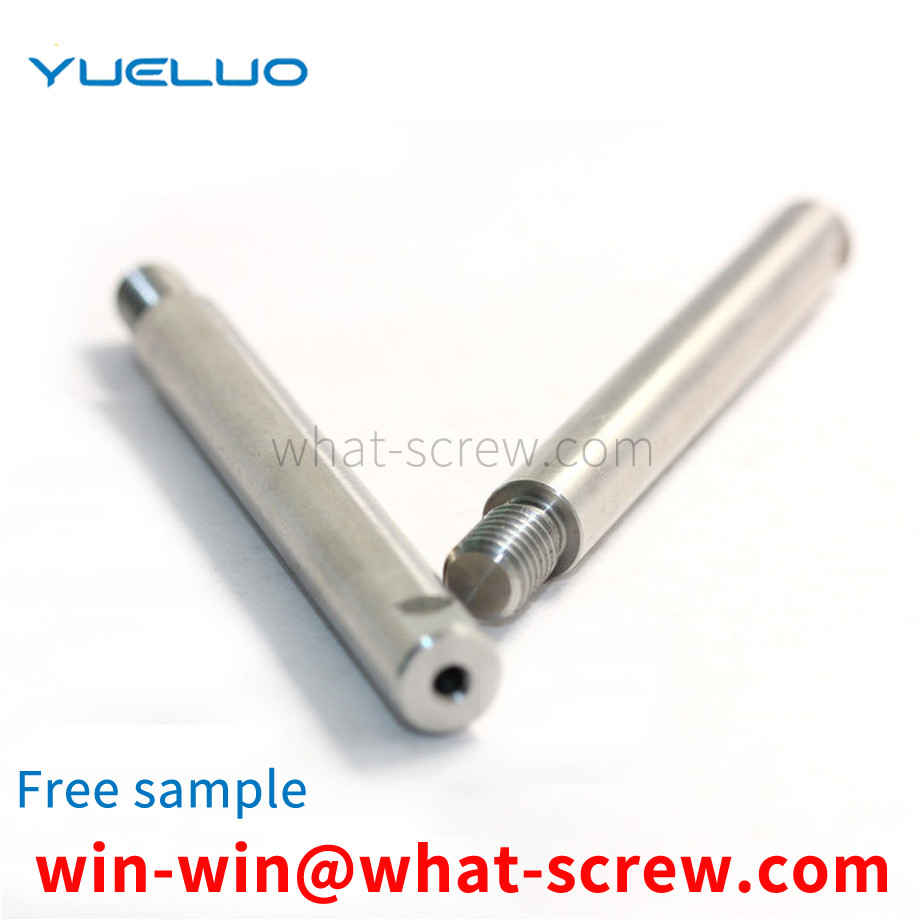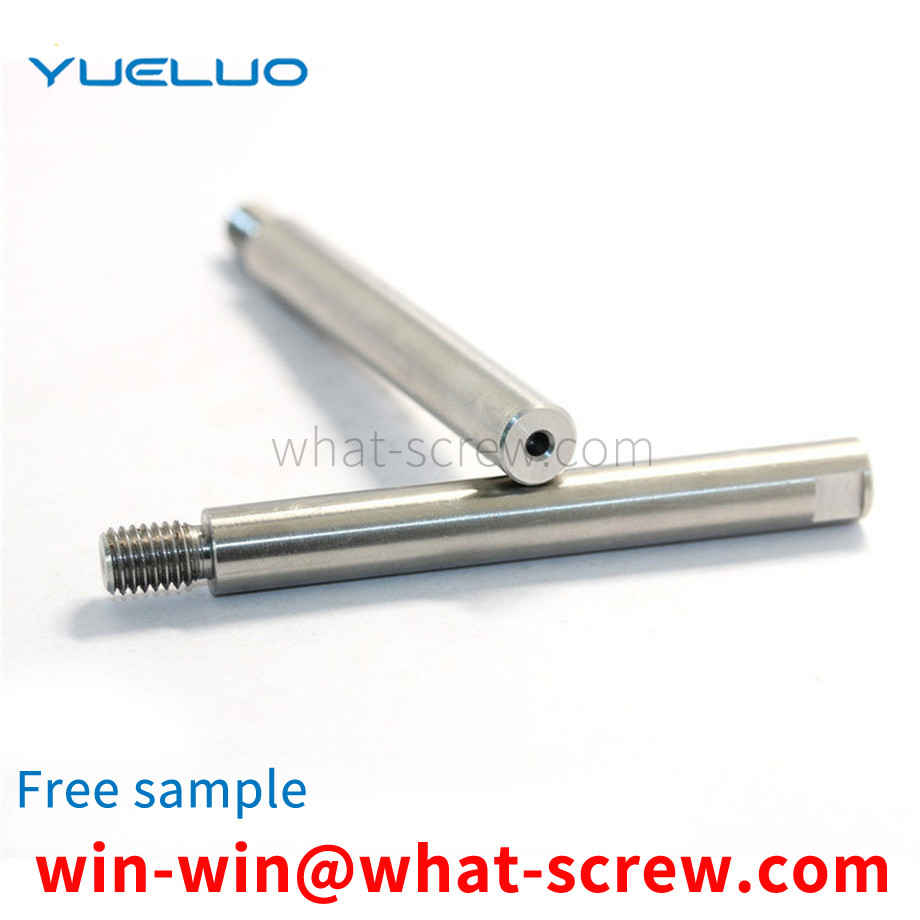Screws are a kind of fasteners commonly used in machinery, but most of the screws commonly used in the market are standard parts. The screws themselves are ordinary and have no function of preventing loosening and protecting the matrix. Therefore, in order to prevent the screws from loosening during use , Usually it is necessary to configure additional elastic washers, flat washers, etc. that are suitable for screws, and these elastic washers and flat washers are mostly metal products. During use, it is easy to wear with the body base and damage the protection of the sheet metal base. After long-term use, metal washers are easy to rust, which affects the tightening effect and appearance of screws. In addition, the use of metal washers not only increases the weight and cost, but also the assembly process is complicated and cumbersome, and the anti-loosening and anti-wear effects are not ideal. .
The anti-rotation T-bolt includes a screw rod and a head. An anti-rotation protrusion is designed at the connection between the head and the screw. The cross-section of the anti-rotation protrusion is a square corner with the screw radius as the side length. One anti-rotation protruding shoot can be designed, or two can be designed. In order to ensure the uniform force of the bolt, two are designed.
The first person to describe the spiral was the Greek scientist Archimedes (c. 287 BC - 212 BC). An Archimedes screw is a huge spiral contained in a wooden cylinder that is used to irrigate fields by raising water from one level to another. The real inventor may not be Archimedes himself. Maybe he was just describing something that already existed. It may have been designed by the skilled craftsmen of ancient Egypt for irrigation on both sides of the Nile. In the Middle Ages, carpenters used wooden or metal nails to attach furniture to wooden structures. In the 16th century, nail makers began producing nails with a helical thread, which were used to connect things more securely. That's a small step from these kinds of nails to screws. Around 1550 AD, the metal nuts and bolts that first appeared in Europe as fasteners were all made by hand on a simple wooden lathe. Screwdrivers (screw chisels) appeared in London around 1780. Carpenters have found that tightening a screw with a screwdriver holds things in place better than hitting with a hammer, especially with fine-grained screws. In 1797, Maudsley invented the all-metal precision screw lathe in London. The following year, Wilkinson built a nut and bolt making machine in the United States. Both machines produce universal nuts and bolts. Screws were quite popular as fixings because an inexpensive method of production had been found at that time. In 1836, Henry M. Philips applied for a patent for a screw with a cross recessed head, which marked a major advance in screw base technology. Unlike traditional slotted head screws, Phillips head screws have the edge of the head of the Phillips head screw. This design makes the screwdriver self-centered and not easy to slip out, so it is very popular. Universal nuts and bolts can connect metal parts together, so by the 19th century, the wood used to make machines to build houses could be replaced by metal bolts and nuts. Now the function of the screw is mainly to connect the two workpieces together and play the role of fastening. The screw is used in general equipment, such as mobile phones, computers, automobiles, bicycles, various machine tools and equipment, and almost all machines. need to use screws. Screws are indispensable industrial necessities in daily life: extremely small screws used in cameras, glasses, clocks, electronics, etc.; general screws for televisions, electrical products, musical instruments, furniture, etc.
rivet is a nail-shaped object used to join two parts or components with a through hole and a cap on one end. In riveting, the riveted parts are connected by their own deformation or interference. There are many types of rivets, and they are informal. Commonly used are R-type rivets, fan rivets, blind rivets, blind rivets, tree rivets, semi-circular head, flat head, semi-hollow rivets, solid rivets, countersunk head rivets, blind rivets, hollow rivets, these usually use their own deformation Connect the riveted parts. Generally less than 8 mm with cold riveting, larger than this size with hot riveting. But there are exceptions. For example, the nameplate on some locks is riveted by the interference between the rivet and the lock body hole.
The semicircular key is a kind of key, the upper surface is a plane, the lower surface is a semicircular arc surface, the two sides are parallel, commonly known as the crescent key. It is basically the same as the flat key connection method, but it is more convenient to manufacture and disassemble than the flat key, and is especially suitable for the connection between the tapered shaft and the hub. The half-round key transmits torque on the side, but the keyway is deep, which weakens the shaft greatly. Due to the deep keyway, the bottom of the keyway is easily deformed after the shaft is heat treated. Therefore, when the semicircular key and the keyway are assembled in a transitional fit relationship, the interference between the lower part of the semicircular key and the bottom of the keyway often occurs, resulting in difficult or impossible assembly. Assembly situation. In order to solve the above technical problems, the current method is to make the thickness of the semicircular key appropriately thin, so that the semicircular key and the keyway are clearance fit, which brings about a large gap between the upper part of the semicircular key and the keyway, and the semicircular key is in operation. Difficult to locate in the keyway, affecting smooth transmission.
We have many years of experience in the production and sales of screws, nuts, flat washers, etc. The main products are: GB6175 hexagon nuts, T-shaped welding nuts, flat cylindrical bolts, grip washers and other products, we can provide you with fastening suitable for you piece solution.



















 Service Hotline
Service Hotline




